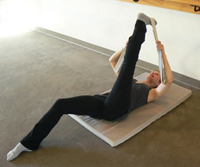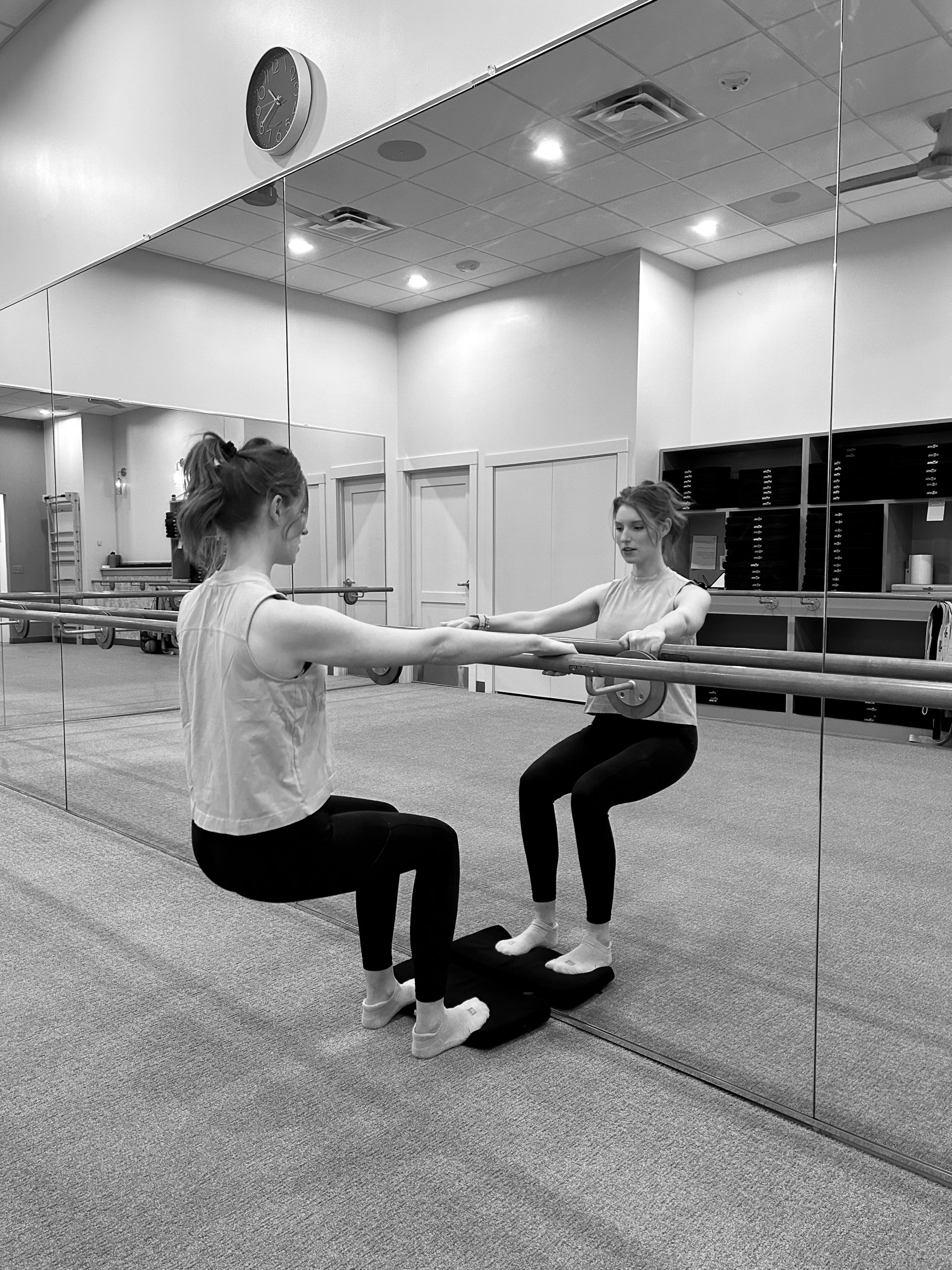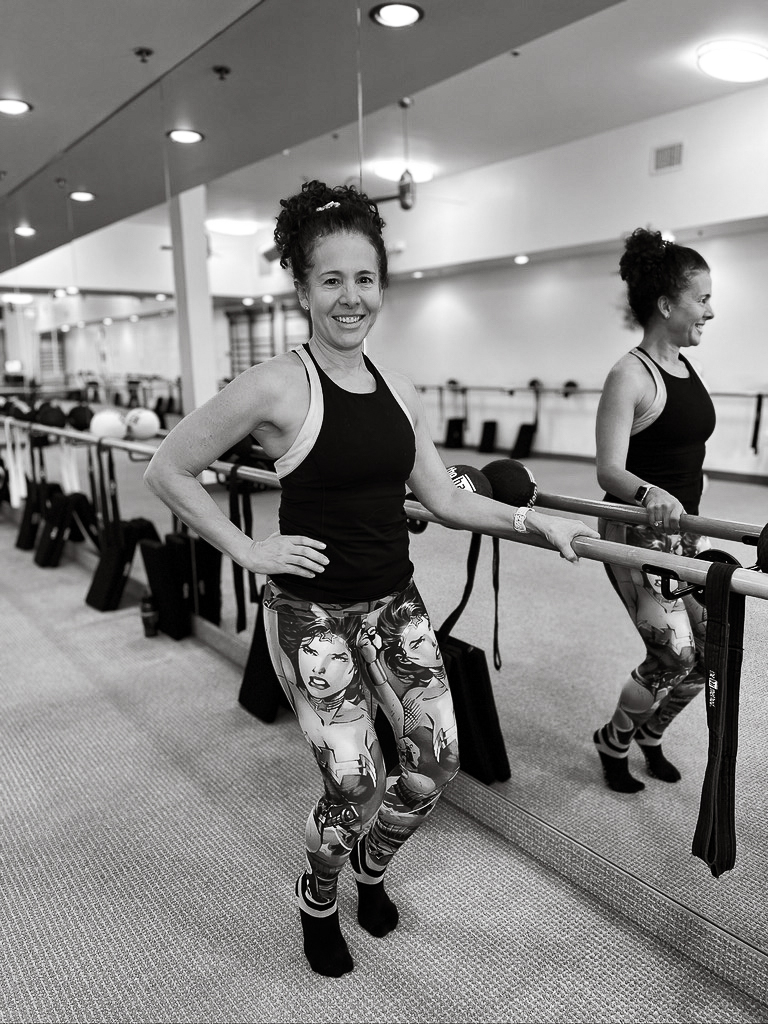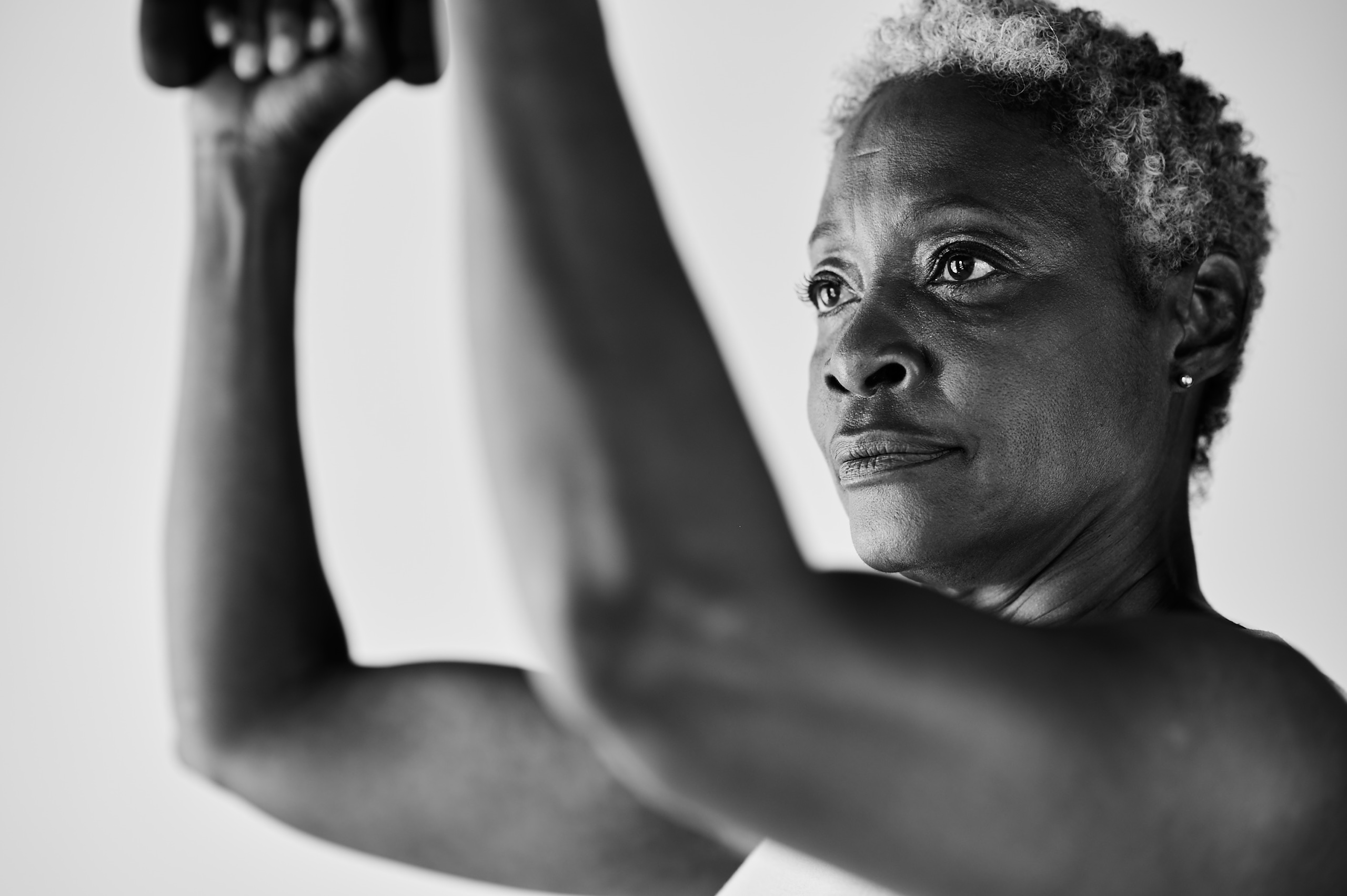Exclusive Offer 50% Off One Month Of Unlimited Classes
How The Bar Method Exercises Help Students with Back Conditions
HOW THE BAR METHOD EXERCISES HELP STUDENTS WITH BACK CONDITIONS
Yesterday, I met a Bar Method student named Emily Murgatroyd, a slender, athletic student there who owns a green, sustainable event planning company based in Vancouver. I was in that city to teach at the beautiful new Bar Method studio there, and Emily was one of my students. After class, Emily told me that she has two herniated disks. “The recovery process for my back was slow and frustrating,” she told me. “The challenging workouts I used to enjoy caused me pain and while I enjoyed the low impact exercises recommended to me (yoga, Pilates etc.) I really missed the feeling of accomplishment and the ‘high’ I got from strenuous activity. To me it felt like an ‘either/or situation’€¦In June I was introduced to The Bar Method by a friend and after my first class I knew that I’d be hooked. The combination of low impact yet highly challenging exercises meant that I could enjoy all of the physical and mental benefits of a high intensity workout without any impact whatsoever on my back – or entire body for that matter.”
 By talking to students like Emily over the years, I’ve found that most back pain sufferers who take The Bar Method get relief from their condition, as Emily did. A great deal of back pain is due to strains, sprains and spasms in back muscles caused by stress and muscle tightness. Exercise, especially The Bar Method, helps tremendously with this problem by strengthening students’ cores, stretching the muscles in their backs and legs, and improving their alignment and body mechanics. One group that is especially vulnerable to back issues is made up of people with weak abs and glutes, which are not brought into service when they should be. The result is that the lower back muscles get overused, thereby putting themselves at risk for tweaks. I can pick these students out when they take their first Bar Method classes because they tend lean back during the “seat” exercises, trying to use their back muscles instead of their glutes and hamstrings to move their legs. Eventually these students learn to use their seat-muscles and abs to control the movements of their legs and torso, taking a load of stress off their backs.
By talking to students like Emily over the years, I’ve found that most back pain sufferers who take The Bar Method get relief from their condition, as Emily did. A great deal of back pain is due to strains, sprains and spasms in back muscles caused by stress and muscle tightness. Exercise, especially The Bar Method, helps tremendously with this problem by strengthening students’ cores, stretching the muscles in their backs and legs, and improving their alignment and body mechanics. One group that is especially vulnerable to back issues is made up of people with weak abs and glutes, which are not brought into service when they should be. The result is that the lower back muscles get overused, thereby putting themselves at risk for tweaks. I can pick these students out when they take their first Bar Method classes because they tend lean back during the “seat” exercises, trying to use their back muscles instead of their glutes and hamstrings to move their legs. Eventually these students learn to use their seat-muscles and abs to control the movements of their legs and torso, taking a load of stress off their backs.
I’d like to tell you that all Bar Method students with back pain get better just by taking the class, but when it comes to the back, the situation is not so simple. Our backs, like our knees, are complicated joints with many moving parts, and like knees, can misfire in multiple ways (see my blog on knees posted earlier this month). Depending on the underlying cause, back pain can either respond well to the Bar Method or require students to modify some of the exercises. Here are a few back problems that can fall into this second category:
- Sciatica is actually a symptom, not a condition in itself. It refers to numbness or tingling in your leg from something pressing on your sciatic nerve. The culprit could be a vertebral disk, a tight muscle or, if you’re pregnant, a baby. Depending on what’s happening at the pressure point, you might need to limit the degree of movement in your back when you exercise.
- Scoliosis refers to an abnormal curvature of the spine and can cause low back pain. Students with scoliosis might again find it more comfortable to modify some of Bar Method exercises that include back bending.
- Arthritis, osteoarthritis and bone spurs in the back are caused by degenerated vertebrae. Students who are moderately effected by these conditions usually benefit from the Bar Method’s core work and stretches, but can feel so much sensitivity around the affected areas that they find doing modifications during some of the back stretches more comfortable.

If you suspect you have a back condition that calls for special attention when you take class or use one of the DVDs, you can do the following modifications and still get a great workout: During the stretch at the bar, you can go to a stall-bar and place your leg up on a lower rung. Doing so will lessen the degree of stretching in your upper leg and lower back. See photo at right.
- During the “fold-over” version of “seat-work” you can work with a more upright torso, again, so as to minimize the flexion in your hips.
- During pretzel, a sitting seat exercise, do “standing seat.”
 During “round-back,” (shown right) which is taught only in Bar Method studio classes and not on the DVDs, you are welcome to lie down, as illustrated.
During “round-back,” (shown right) which is taught only in Bar Method studio classes and not on the DVDs, you are welcome to lie down, as illustrated.
Most important of all, if you have back pain, find a way to exercise. More than 80% of Americans will experience severe back pain in their lifetimes, so you are statistically unlikely to escape the experience. Medical research has found that consistent exercise keeps your muscles and joints moving and active in a way that counteracts continued tightening and strains. So if and when you do have an episode, finding a way to exercise is your best bet at a speedy recovery.



